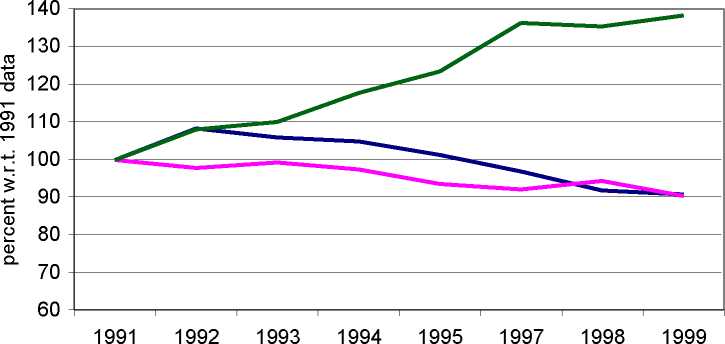Current Agriculture, Food & Resource Issues
D. Sparling and E. van Duren

Number of establishments Employment Cash Receipts
Figure 11 Canadian primary agricultural statistics - number of establishments,
employment levels and cash receipts relative to 1991
Source: Strategis Canada
Where there are no countervailing forces, firms dealing in commodities have been,
and will continue to be, driven by pressures of price. Industry players must grow to
achieve economies of scale and take advantage of cost-saving technological innovations.
With the exception of very rapidly growing industries, the result is increased
concentration, as has been evident in the North American meatpacking and grain
industries. Unfortunately for the Canadian rural landscape, this phenomenon applies
across much of primary agriculture (figure 11), where output has risen while firm
numbers and employment have fallen.
However, where there are opportunities for innovation and product differentiation the
outcome is different. Although many global corporations continue to expand, new product
opportunities translate into new companies. In such industries, in spite of a significant
number of acquisitions, the number of companies continues to increase. This has been
particularly evident in the food-processing sector, which has shown considerable growth
in firm numbers (figure 12).
43
More intriguing information
1. Expectation Formation and Endogenous Fluctuations in Aggregate Demand2. Sectoral Energy- and Labour-Productivity Convergence
3. Fiscal Sustainability Across Government Tiers
4. The name is absent
5. Personal Experience: A Most Vicious and Limited Circle!? On the Role of Entrepreneurial Experience for Firm Survival
6. Handling the measurement error problem by means of panel data: Moment methods applied on firm data
7. The name is absent
8. Confusion and Reinforcement Learning in Experimental Public Goods Games
9. Opciones de política económica en el Perú 2011-2015
10. Labour Market Institutions and the Personal Distribution of Income in the OECD